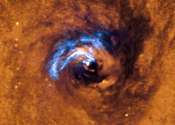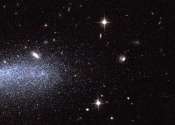Astronomers discover how to feed a black hole
The black holes at the centers of galaxies are the most mysterious objects in the Universe, not only because of the huge quantities of material within them, millions of times the mass of the sun, but because of the incredibly ...









